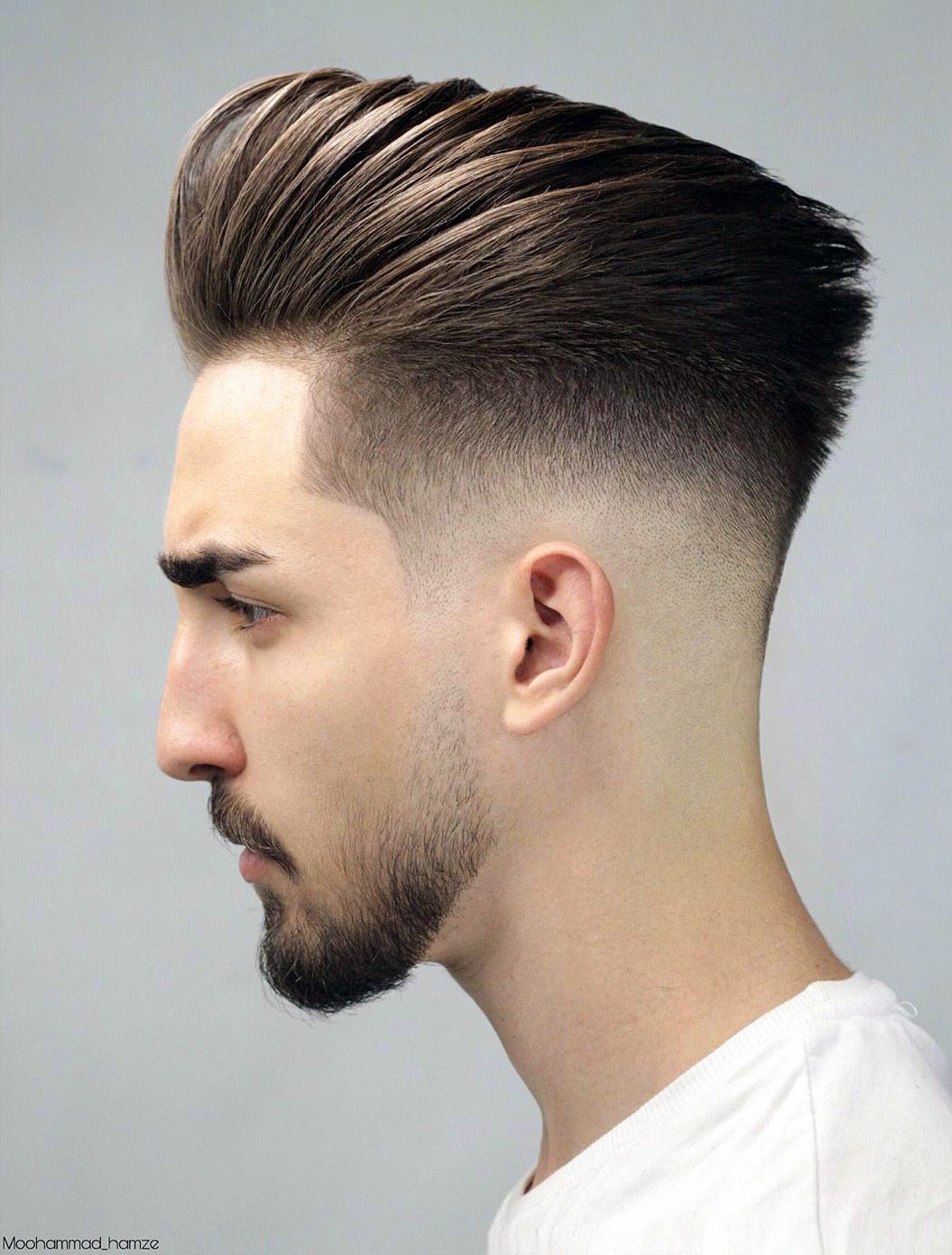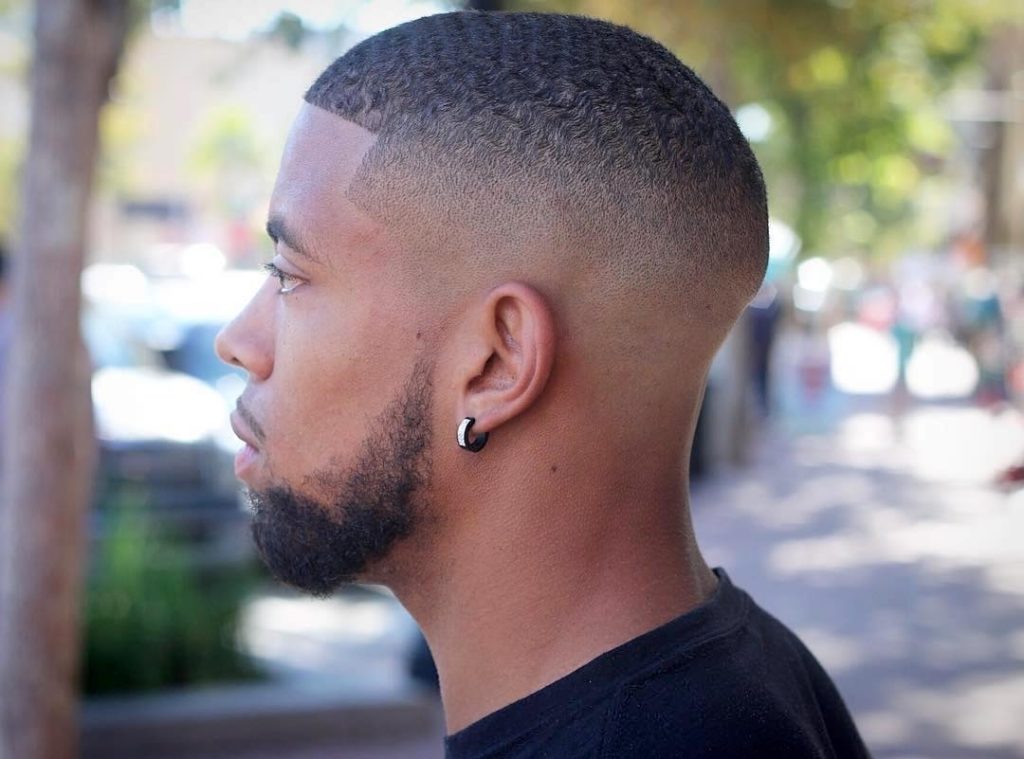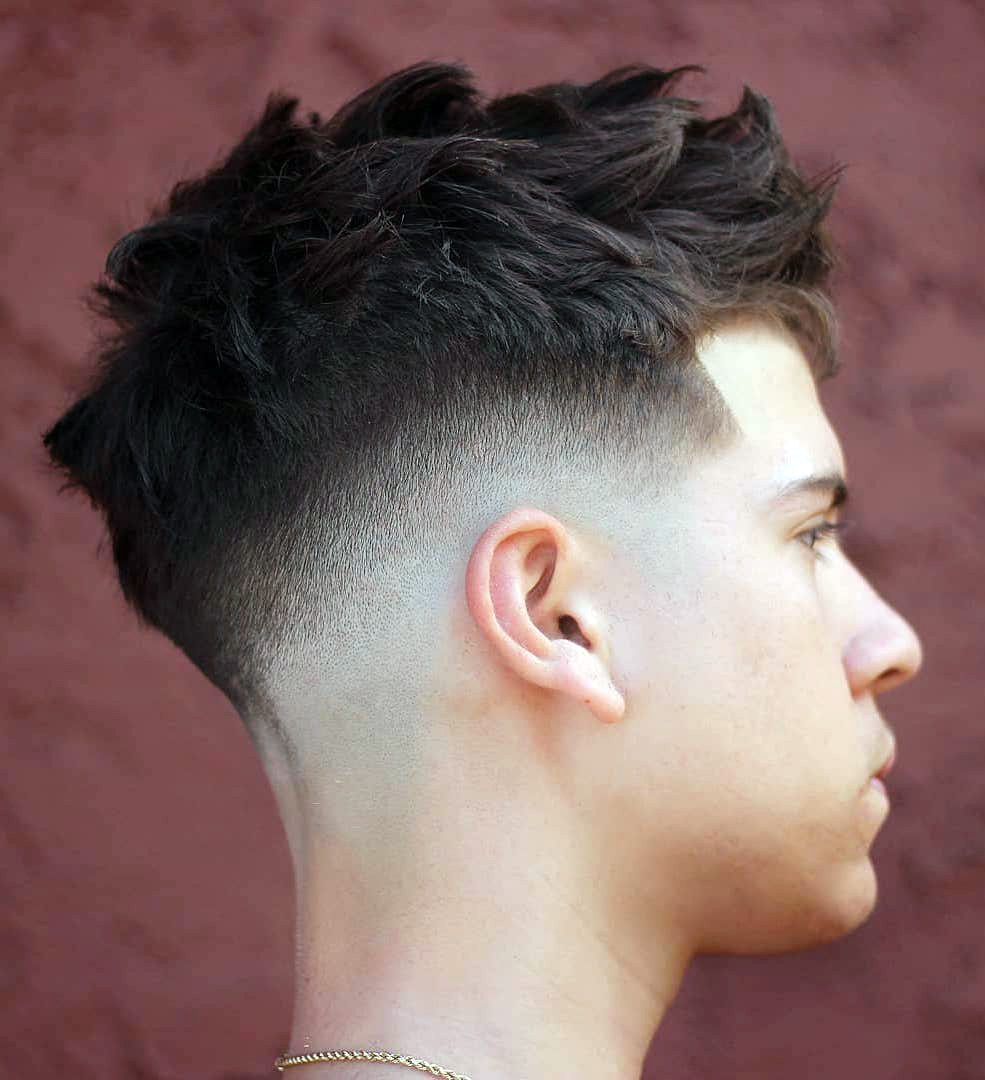AI-Generated Article
This content has been automatically generated using artificial intelligence technology. While we strive for accuracy, please verify important information independently.
Are you looking to refresh your appearance with a haircut that offers both a clean finish and plenty of styling freedom? The low fade hairstyle, it's almost, is a truly popular choice for many folks today. This particular cut brings a subtle yet very sharp edge to your overall look, allowing you to keep some length on top while enjoying a neat, tidy feel around the sides and back. It's a great way, you know, to update your personal style without making a drastic change, blending classic appeal with a modern touch.
This style, quite simply, starts its gradient lower down on the head, often just above the ears and curving around to the nape of the neck. It gradually gets shorter, blending down to a very close cut or even bare skin. This gentle transition creates a polished appearance that, frankly, suits a wide range of personal tastes and hair types, making it a favorite in barbershops everywhere.
We'll explore, in a way, the different kinds of low fade cuts, from those that softly taper to those that go right down to the skin. You'll also find out how to style these cuts with various hair lengths and textures, whether your hair is short, long, curly, or straight. So, let's get into what makes this haircut a fantastic option for you, and how you can truly make it your own.
Table of Contents
- What is a Low Fade Hairstyle?
- Different Kinds of Low Fade Haircuts
- Why Choose a Low Fade? The Benefits
- Low Fade Compared to a High Fade
- Styling Your Low Fade: Tips for Different Hair Types
- Picking the Best Low Fade for Your Face Shape
- Keeping Your Low Fade Looking Good: Upkeep
- Frequently Asked Questions About Low Fade Hairstyles
What is a Low Fade Hairstyle?
A low fade hairstyle, you know, is a haircut where the hair on the sides and back of the head gradually gets shorter, blending from a longer length on top down to a much shorter length near the bottom. This transition, quite simply, begins quite low on the head, typically just above the ears and then wraps around the back. It’s a very subtle but sharp cutting technique that can be added to nearly any haircut, giving it a clean, modern finish.
The beauty of this style, in a way, lies in its gentle graduation. Unlike some other fades that start higher up, a low fade keeps more length around the crown and upper sides, which offers a softer look while still keeping things very neat. This means you get that crisp line without losing too much volume on the sides, something many people really appreciate. It’s a pretty adaptable cut, too, working well with various hair types and styles on top, as we'll discuss.
Different Kinds of Low Fade Haircuts
There are, you know, several ways to do a low fade, each with its own distinct feel. Understanding these differences can really help you decide which one is just right for you. From a softer blend to a very bold contrast, there’s a low fade variation for almost everyone, which is actually quite neat.
The Low Taper Fade
The low taper fade, basically, is the most subtle of the low fades. It involves a very gradual reduction in hair length, typically starting just above the ear and tapering down to a slightly shorter length at the neckline. This kind of fade doesn't go down to the skin; instead, it leaves a little bit of hair, creating a soft, natural blend. It's a great option for those who want a clean look without a dramatic contrast, offering a refined appearance that's still pretty sharp.
The Low Skin Fade
A low skin fade, sometimes called a low bald fade, is a bolder choice. With this one, the hair gradually shortens until it reaches bare skin near the bottom, just above the ears and around the nape. This creates a very clean and striking contrast between the longer hair on top and the faded sides. It’s a fantastic option for a really crisp, modern look, and it honestly provides a very neat edge, which many people prefer, especially in warmer weather.
The Low Drop Fade
The low drop fade, in some respects, is quite unique because of its shape. Instead of following a straight line around the head, this fade curves or "drops" down behind the ear, following the natural curve of the head towards the nape. This gives it a slightly more rounded or softer appearance at the back compared to a straight low fade. It’s a bit more dynamic, you know, and can add a really interesting shape to your haircut, making it stand out just a little.
Why Choose a Low Fade? The Benefits
Choosing a low fade, apparently, comes with a lot of good things. For one, it’s incredibly versatile. You can pair it with pretty much any hair length or texture on top, from short crops to flowing curls. This means you can keep your personal style while adding a modern, clean touch to the sides and back. It’s a very adaptable haircut, really.
Another big benefit, you see, is how neat and tidy it keeps your sides. The gradual fade means less bulk, which can make your hair feel lighter and look much cleaner, especially around the ears and neckline. This clean finish gives a polished appearance that works well for both formal and casual settings, making it a good choice for almost any occasion. Plus, it’s a fairly low-maintenance style when it comes to daily styling, which is a definite plus for busy people.
Low Fade Compared to a High Fade
When you're thinking about a fade, you'll often hear about low fades and high fades, and it's good to know the difference, actually. The main distinction between a low fade and a high fade, basically, is where the shortest part of the fade begins on the head. This starting point really changes the overall feel and look of the haircut, you know.
A low fade, as we’ve discussed, starts quite low, typically just above the ear and around the nape of the neck. This means that more of your head retains a longer length, creating a softer, more subtle transition. It offers a clean look without being too bold, preserving more hair on the sides and top. It’s a pretty understated choice, in a way, that still looks very sharp.
A high fade, on the other hand, starts much higher up on the head, often around the temples or even higher, near the top of the head. This creates a much more dramatic and noticeable contrast between the short sides and the longer hair on top. It’s a bolder statement, often giving a very edgy or athletic appearance. So, if you want something really striking and defined, a high fade might be your pick. If you prefer a more gentle, blended look, the low fade is probably more your speed, you know.
Styling Your Low Fade: Tips for Different Hair Types
One of the best things about a low fade, honestly, is how well it works with all sorts of hair lengths and textures. Whether your hair is short, long, curly, or straight, you can rock a low fade. The key, you know, is to pick the right products and techniques for the hair you have on top. Let’s explore some ideas.
For Shorter Hair on Top
If you have shorter hair on top, like a crew cut or a short quiff, a low fade adds a very clean and polished finish. You can use a little bit of pomade or styling cream to give it some texture and hold. Just work a small amount through your hair, shaping it with your fingers or a comb. This really helps to define the top while the fade keeps the sides neat, which is pretty cool.
For Longer Hair on Top
For those with longer hair on top, maybe something like a slick back, a messy crop, or even a man bun, a low fade creates a fantastic contrast. The short sides make the longer hair on top stand out more, giving it a very deliberate and stylish appearance. You might use a light hold product to keep the longer hair in place or just let it flow naturally, letting the fade do most of the work in keeping things tidy. It's a great way, you know, to manage longer hair without it looking too wild on the sides.
For Curly or Wavy Hair
Curly hair, with a low fade, looks absolutely fantastic, actually. The fade cleans up the sides, preventing that "poofy" look that curly hair can sometimes get, while allowing your natural curls to shine on top. Use a curl-enhancing cream or a light gel to define your curls and reduce frizz. You can let the curls fall naturally or push them back for a more structured look. This combination, you know, really highlights the texture of your hair in a very appealing way.
For Straight Hair
Straight hair with a low fade can look incredibly sharp and sleek. Whether you go for a classic side part, a textured fringe, or a slicked-back style, the low fade provides a crisp, clean foundation. A bit of pomade or wax can help you achieve that smooth, defined look. You can also use a matte product for a more natural, textured finish. The precise lines of the fade, pretty much, complement the clean lines of straight hair, giving a very refined appearance.
Picking the Best Low Fade for Your Face Shape
Choosing the right low fade variation, you know, can really make a difference in how your haircut frames your face. Different face shapes tend to look better with certain fade styles. It’s not a hard rule, of course, but these are some general ideas that often work well for many people.
For those with a rounder face, a low fade that keeps a bit more length on top can help to visually lengthen the face. A low taper fade, for example, might be a good choice as it offers a softer transition. If you have a square face, a low fade can soften the strong jawline while still keeping a very masculine edge. A low drop fade, with its curved line, might also complement a square face nicely, adding a touch of softness.
If your face is more oval-shaped, you're pretty lucky, as most low fade variations will look great on you. You have a lot of freedom to experiment with different types, from a low skin fade for a bold look to a low taper for something more classic. For longer or rectangular faces, keeping a little more length on the sides with a low fade, perhaps a low taper, can help balance the face's length, making it appear a bit wider. The key, you know, is to talk to your barber; they can really help you figure out what works best for your specific features.
Keeping Your Low Fade Looking Good: Upkeep
To keep your low fade looking its best, regular upkeep is, you know, pretty important. Because the fade is a gradual blend, it will start to grow out and lose its crispness over time. The sharper the fade, the more often you’ll want to visit your barber. For a low skin fade, you might find yourself needing a trim every 1-2 weeks to maintain that very clean, bald-to-skin transition. A low taper fade, being a bit softer, might allow you to go 2-3 weeks between visits.
Beyond regular trims, how you wash and style your hair also plays a role. Use good quality shampoo and conditioner that suit your hair type. When styling, use products that offer the right amount of hold and finish for your desired look, whether that’s a matte paste for texture or a pomade for shine. And, you know, try not to mess with the faded part too much; let your barber handle that precision work. Keeping it clean and styled on top will, in a way, really make the fade stand out.
Frequently Asked Questions About Low Fade Hairstyles
Is a low fade good for all hair types?
Yes, actually, a low fade is incredibly adaptable and works well with pretty much all hair types. Whether your hair is straight, wavy, curly, or coily, the low fade can be adjusted to complement its natural texture. It’s all about how the barber blends the hair and what length you keep on top, you know.
How often should I get a low fade haircut?
Typically, to keep a low fade looking fresh and sharp, you'll want to get it trimmed every 2 to 3 weeks. If you have a low skin fade, you might even need to go a bit more often, maybe every 1 to 2 weeks, just to keep that very clean line. A low taper fade can usually last a little longer, perhaps up to 3-4 weeks, before it starts to lose its defined shape, you know.
What's the difference between a low fade and a taper?
A low fade is a general term for a fade that starts low on the head, often going down to skin or a very short length. A taper, however, is a specific kind of fade that is always very subtle and typically does not go down to the skin. It’s a gentle reduction in length, usually at the neckline and sideburns. So, a low taper fade is a type of low fade, but not all low fades are tapers, if that makes sense, you know.
The low fade hairstyle, as we've seen, is a fantastic choice for anyone looking for a versatile and sharp haircut. It offers a clean, modern edge while allowing for plenty of creativity with the hair on top. From the subtle low taper to the bold low skin fade, there’s a variation that can truly enhance your personal style, no matter your hair type or face shape. This cut, honestly, is a testament to how a simple change can make a big impact.
So, if you're thinking about a fresh look, consider talking to your barber about a low fade. They can help you pick the perfect type and show you how to style it for your daily routine. To discover even more styling tips and haircut ideas, you can learn more about low fade hairstyles from reputable sources like this one. Also, remember you can learn more about hair care on our site, and find additional inspiration by checking out other popular men's haircuts we've explored.
🖼️ Related Images



Quick AI Summary
This AI-generated article covers The Low Fade Hairstyle: Your Guide To A Sharp, Versatile Look with comprehensive insights and detailed analysis. The content is designed to provide valuable information while maintaining readability and engagement.
Nick Swaniawski
✍️ Article Author
👨💻 Nick Swaniawski is a passionate writer and content creator who specializes in creating engaging and informative articles. With expertise in various topics, they bring valuable insights and practical knowledge to every piece of content.
📬 Follow Nick Swaniawski
Stay updated with the latest articles and insights